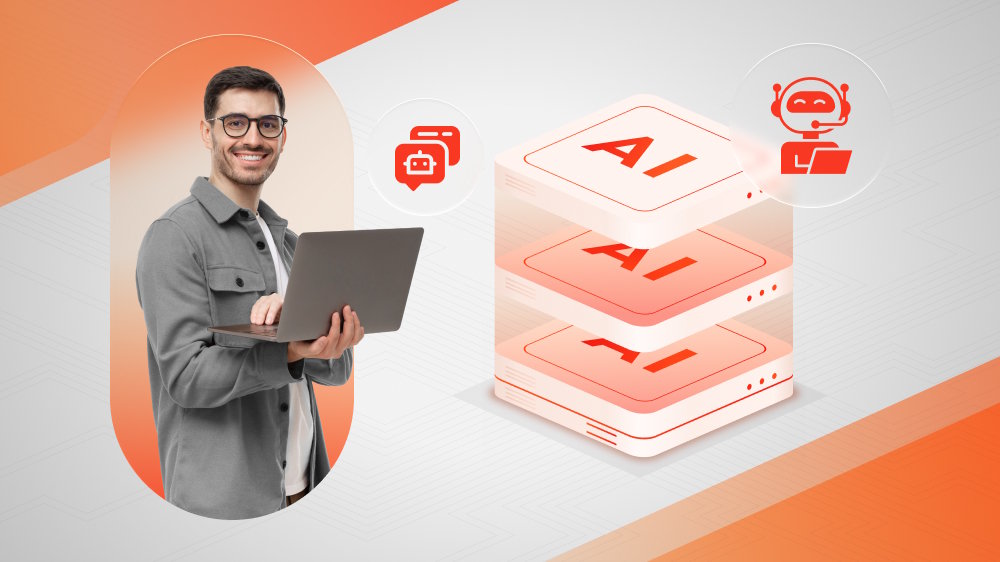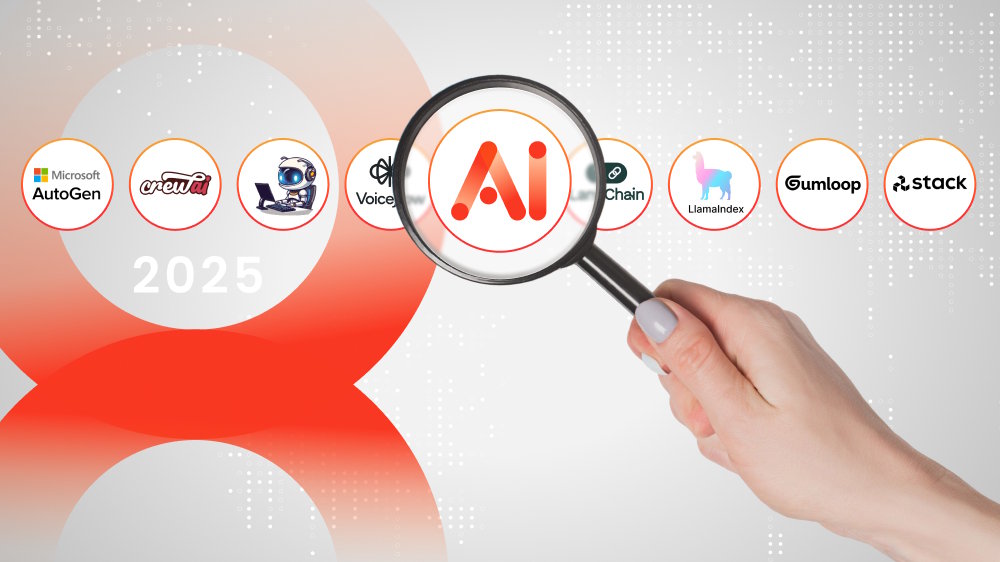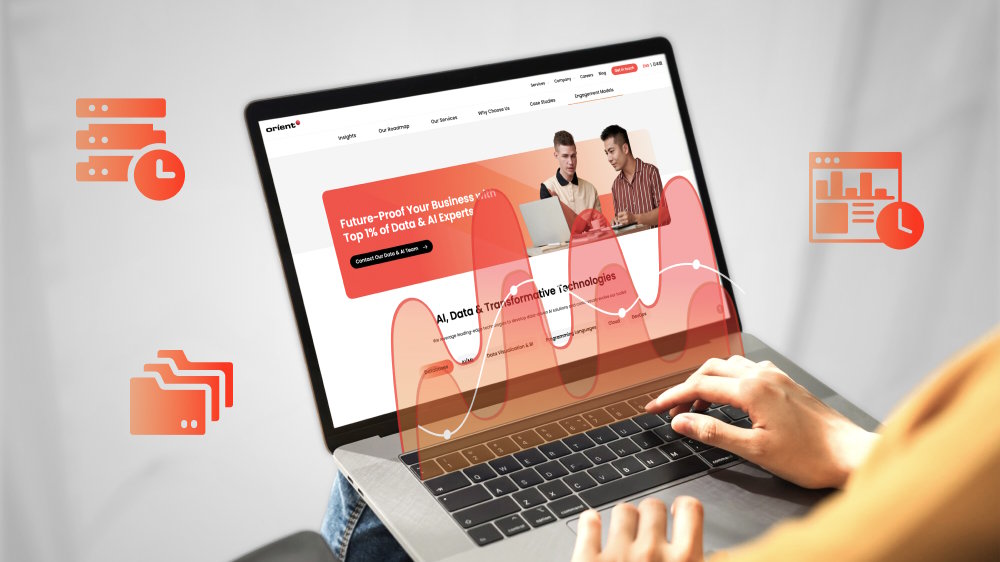
AI in Demand Forecasting: Benefits, Challenges, and Real-World Examples
What if your business could see the next market shift before it happens? That’s exactly what AI demand forecasting makes possible.

Content Map
More chaptersSteve Jobs once famously said that a business’s job is to figure out what a customer wants before they even know what they want. His vision is spot on, as Apple is continuously being viewed as one of the most innovative tech brands in the world.
This idea highlights the importance of demand forecasting – knowing what customers want before they know it. To perform demand forecasting efficiently, however, one needs to be able to handle a large amount of data efficiently and accurately. Doing these tasks manually can be daunting and error-prone.

If you find yourself in the same boat, then it’s time to turn technology into your best friend. In today’s article, we will shine a light on AI in demand forecasting – a powerful tool that supports the growth and sustainability of your business.
Key Takeaways:
- AI demand forecasting leverages data and machine learning to predict future demand, uncover patterns, and help businesses make smarter, faster decisions.
- To produce accurate predictions, AI leverages an array of technologies, including machine learning, predictive analytics, big data, and more.
- AI-powered demand predictions provide you with data-driven foresight – a necessity in today’s volatile market. With AI forecasting, you not only save costs, improve customer satisfaction and supply chain relationships, but also become more resilient.
- Many giants in the field have used AI-powered demand prediction tools, including Amazon, P&G, and Lenovo.
- However, data quality and complex implementation may stop you from adopting AI tools. Our advice is to start small, understand the tools you chose, and take measures to ensure data quality and security.
What Is AI Demand Forecasting?
AI demand forecasting uses artificial intelligence to predict future demand for products or services. By analyzing historical data, market trends, and customer behavior, AI systems can identify patterns, deliver accurate forecasts, and help businesses make faster, data-driven decisions to optimize supply chains and operations.
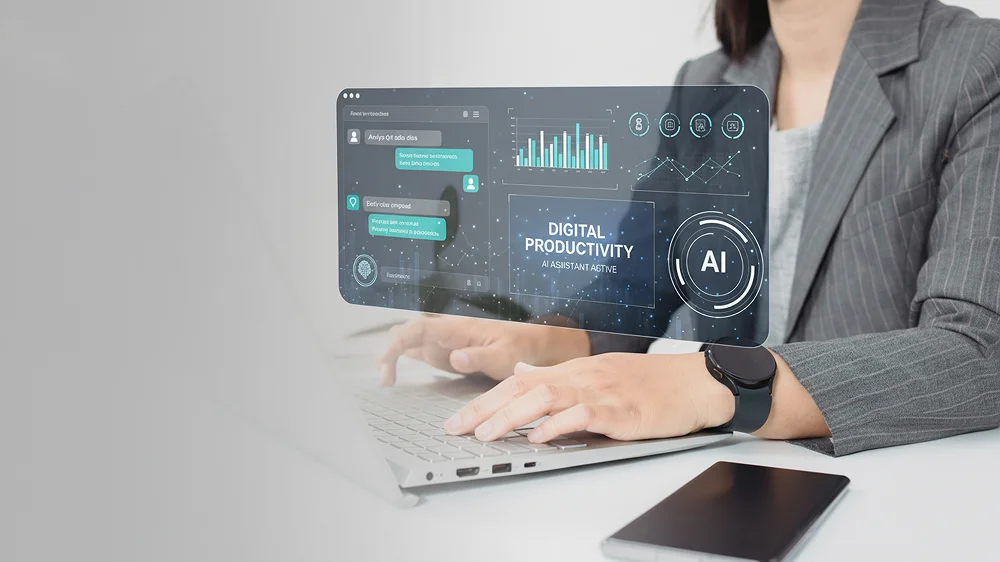
You can see AI’s presence in demand forecasting in real life. Amazon, for example, uses AI in tandem with machine learning (ML) to analyze and keep the stock levels in check. Based on an item’s popularity, the AI algorithm can automatically reorder products in high demand or low in stock.
Another example of AI helping businesses plan years ahead with little to no human input is Microsoft’s Copilot. Copilot AI system is integrated into the Dynamics 365 Supply Chain Management platform, allowing teams to plan material resourcing up to years ahead with the help of AI.
How Does AI in Demand Forecasting Work?
Simply put, demand forecasting is estimating a forecast by analyzing data. This data comes from multiple sources, and to make sense of them, there are several methods to analyze them.

The process of demand forecasting often starts with categorizing data, e.g., external and internal data, qualitative and quantitative data, and so on. When examined closely, these data sets are often made up of:
- Internally-sourced data: customer feedback, customer preferences, past sales numbers, etc.
- Historical data: holiday promotions, seasonal peaks, trends, and patterns.
- Reports and research: news reports, market reports and research, social media and cultural trends, etc.
- Real-time data: social media engagements or current market conditions, etc.
This massive amount of data is then analyzed to make future predictions. As you can imagine, the human brain can only take in so much information, and analyzing every byte of data can be extremely time-consuming and error-prone. Did you know that nearly 75% of supply chain companies still rely on spreadsheets or legacy systems, according to a 2022 McKinsey article? Demand forecasting and the supply chain system are in dire need of modernization, and leaders are aware of this. This is where AI taps in and does most of the heavy lifting.
Core Mechanics of AI Demand Forecasting
Unlike traditional forecasting methods, modern AI tools rely on a combination of modern technologies to anticipate predictions before they even take place. Instead of passive and static models, modern technologies allow businesses to stay agile while adopting market trends.
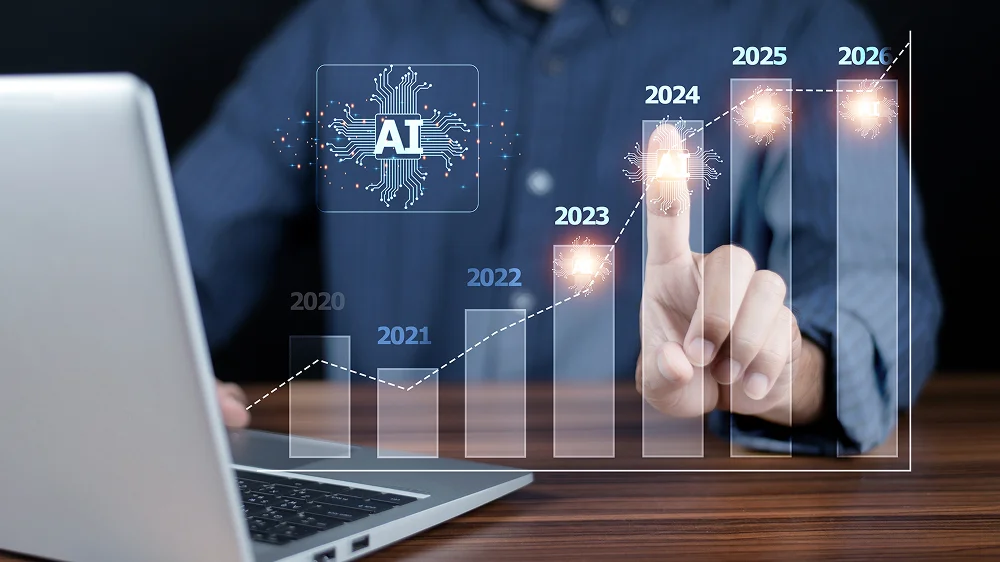
Machine Learning
Machine learning constantly learns from the data and from there, makes inferences from it. In the context of demand forecasting, machine learning models like decision trees, neural networks, or regression models allow teams to make accurate connections between massive data sets and uncover hidden patterns.
Big Data and Predictive Analytics
AI-based demand forecasting makes use of big data to refine predictive analytics. Beyond sales records, businesses should tap into other data, such as market indicators like inflation rate, policies, and engagement rate across different platforms (website, social media, etc.). This data provides teams with insights to make confident decisions.
Predictive analytics lies at the core of demand forecasting. Utilizing a variety of different models and technologies, predictive analytics constantly refine their predictions when analyzing new sets of data. The results may not always give an exact picture of the future, but it does help share a glimpse into what it might hold.
IoT Integration
The Internet of Things, or IoT, gives companies real-time data on current inventory, user behavior, equipment performance, and more. Constant data collection translates to mountains of data, but proper processing allows companies to automate the reordering process if the stock is too low. It can also stop reordering to prevent overstocking and minimize waste, all while optimizing production in the supply chain. This contributes to speedy and accurate demand forecasting.
AI-based Forecasting Benefits
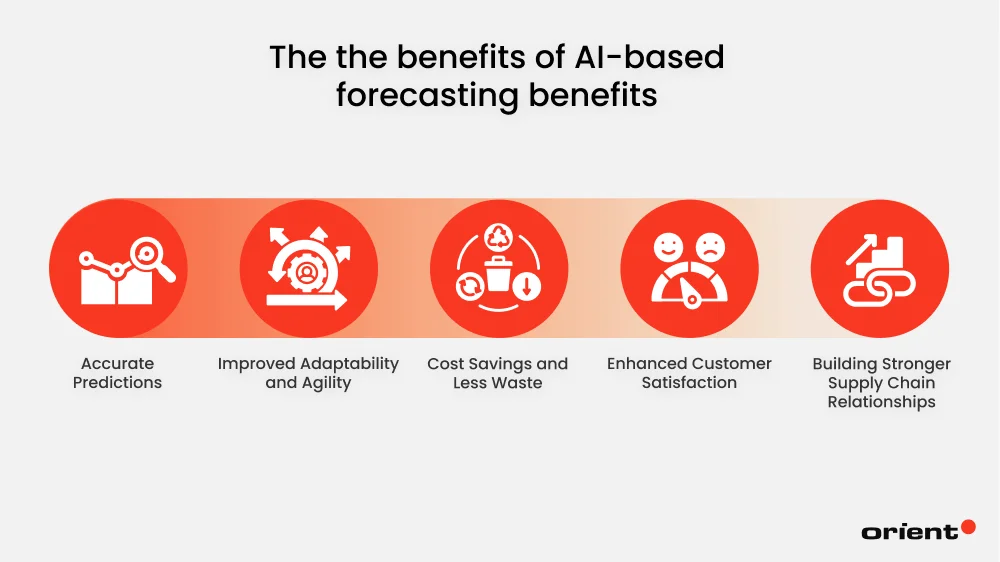
Using AI to forecast demand isn’t only highly accurate, but it also removes human biases and enhances transparency.
Accurate Predictions
By removing the limits of traditional demand forecasting methods, like human bias or errors due to manual processes, AI-powered tools are more powerful and accurate. Despite changing or volatile market conditions, AI tools can be based on internal and external data like historical sales data, market trends and preferences, and research, to produce accurate predictions and actionable insights.
Improved Adaptability and Agility
As former Intel CEO Andy Grove said, “There are two options: adapt or die”. Stagnation can bring a business down fast, especially in today’s increasingly competitive market. Accurate demand forecasting allows a business to adapt when there are disruptions (think of large-scale disruptions like COVID). This is the difference that allows a business to stay competitive and sustainable.
Cost Savings and Less Waste
Accurate prediction leads to increased operational efficiency. AI-powered tools not only provide you with precision, but they also free up time for strategic planning around resource allocation and inventory management. The team can balance stock and sell out, preventing overstocking or understocking. Additionally, strong demand planning minimizes waste and expired products, saving expenses on disposal while also having a positive impact on the environment.
Enhanced Customer Satisfaction
Imagine you always purchase this specific shampoo brand, but it has been sold out for 3 days. This inconvenience probably makes you think twice about buying from the same brand or store again.
This can be avoided with AI-driven demand forecasting. Consistently meeting customers’ needs is how you create repeat, loyal customers. You can also go beyond their expectations by analyzing their historical data and predicting their unique demands, meaning suggesting tailored products for future purchases.
Building Stronger Supply Chain Relationships
Transparent demand forecasting and demand planning create a healthy and resilient supply chain system. Sharing crucial insights among relevant stakeholders is how you ensure everyone is on the same page and aligns the business goals accordingly, preventing data silos.
Another thing to keep in mind is that AI predictions get better with time. AI models constantly learn from new data and refine, creating even stronger and more accurate forecasting.
Real-Life Use Cases of AI-based Demand Forecasting
Procter & Gamble

Procter & Gamble, or P&G, is a multinational brand behind Head & Shoulders, Tide, Pampers, and other well-known consumer goods brands. However, the organization wasn’t immune to the impacts of COVID-19. Having to handle thousands of products and components, the devastating impact of the pandemic wasn’t clear at first. Adding to the complexities, the organization uses different, isolated data systems, making data integration difficult and expensive.
The solution? P&G outsourced analytics and an AI-powered solution to gain real-time insight and integrate data from 5 separate departments.
After feeding the model with complex data sets (bill of materials, inventory information, etc.), P&G saw the following results:
- Integrated data sets that are consolidated and standardized, providing a unified view.
- Real-time data analysis regarding inventory, supply, demand, and reports regarding potential bottlenecks.
- By combining and analyzing data across multiple departments, AI and ML algorithms identify patterns and trends to produce demand forecasts.
This use case is a great example of how AI-driven forecasting models can play a major role in helping a company build resilience and adapt.
Lenovo

Lenovo is a global tech manufacturing company, known for its powerful laptops like Thinkpads. With thousands of suppliers worldwide, the company faced a challenge: breaking down information silos and consolidating data in order to gain visibility into the supply chain system.
This is where the company has developed an AI-powered solution called Supply Chain Intelligence, or SCI for short.
SCI has helped the company achieve a 4.8% revenue increase. Some of its core capabilities include:
- Leveraging AI and ML to continuously analyze large data sets to detect potential risks while recommending real-time mitigation strategies.
- Connecting procurement data with customer experience, offering accurate delivery estimates when customers place online orders.
- Additionally, SCI supports risk anticipation and management, allowing the organization to handle disruptions promptly before they escalate.
This use case goes to show that AI-powered demand tools can enhance a business’s daily operations, not only during large-scale events.
Challenges of AI in Demand Forecasting
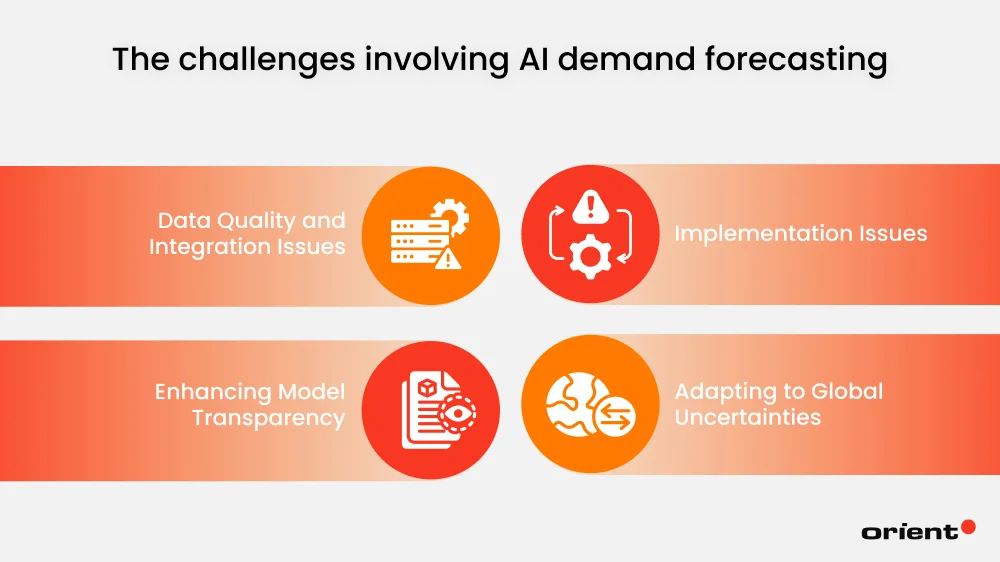
Despite the wide range of advantages, there are certain challenges that a business must tackle to foster strong and accurate AI demand predictions.
Data Quality and Integration Issues
The quality and accuracy of predictions made by AI rely on the data you feed it. Clean, well-structured data is how you ensure the success of your demand predictions. However, to achieve this, there are numerous hurdles a business must jump through:
- Data Acquisition: The first step in developing strong AI tools is gathering data while ensuring quality and integrity. A common tool used to gather information is a web scraper. They automatically and systematically aggregate various data sets, but companies do need to pay attention to certain boundaries, like personal information and proprietary regulations.
- Data Annotation: AI algorithms rely on precisely-labeled data sets for the highest training quality, but manual labeling is prone to human error and time-consuming. Any errors can compromise the AI mode’s performance. Data labeling is challenging and calls for innovative solutions to tackle efficiently.
- Data Storage and Security: Data storage needs to go hand in hand with security, including encryption, access controls, and regular audits. Proactive data protection is complex but necessary, especially when it comes to sensitive data and potential data breaches.
- Data Management: Data governance can be tricky, as it requires strong policies, accountability, and collaboration between teams. Still, a strong governance framework is what leads to accessible and accurate information for better decision-making involving AI tools.
- Data Poisoning: Data poisoning occurs when attackers insert false or harmful data into AI training sets, causing models to produce unreliable or dangerous outcomes. Businesses must implement strong systems to detect anomalies and block suspicious data.
- Synthetic Data Feedback Loops: AI-generated data can be fed back into the models, but over time, it can create harmful feedback loops that reduce model accuracy and increase bias. Balancing synthetic data with authentic, real-world data helps preserve model performance and ensures reliable, unbiased results.
Implementation Issues
As powerful as AI systems are, implementing them into existing systems can result in complicated technical challenges. Businesses may need to pay a large upfront investment, or the process might need time to ensure the AI model is compatible with the AI system. In addition to technical issues, implementing such a change in the business requires overcoming cultural resistance.
Enhancing Model Transparency
Transparency in AI models is how we foster trust in AI’s responses, unlock its full potential, and promote widespread adoption. More importantly, AI transparency is how we ensure fair and inclusive use, all while mitigating unwanted risks.
Still, it can be a mystery how AI models process information and generate responses. That’s why AI models are sometimes referred to as a “black box”, as trying to explain how they generate responses can be challenging. The difficulties don’t end there, as the tech behind AI is constantly evolving, making transparency even more of a hurdle.
Adapting to Global Uncertainties
AI demand forecasting models, by nature, need to adapt to the ever-changing market conditions and local and global events. Once a significant disruption emerges, it’s crucial to quickly retrain the AI models with a new set of data to maintain their accuracy. This also raises another problem: continuous AI maintenance. Even when there are no global disruptions, the model needs to be fed fresh data constantly to keep it accurate and relevant, which can be time-consuming and resource-intensive.
Tips for Implementing AI in Demand Forecasting
Adopting AI tools in an organization takes a lot of time, money, and expertise. Some businesses may avoid AI tools altogether due to the effort it takes, but here are some tips to make the journey a bit easier.
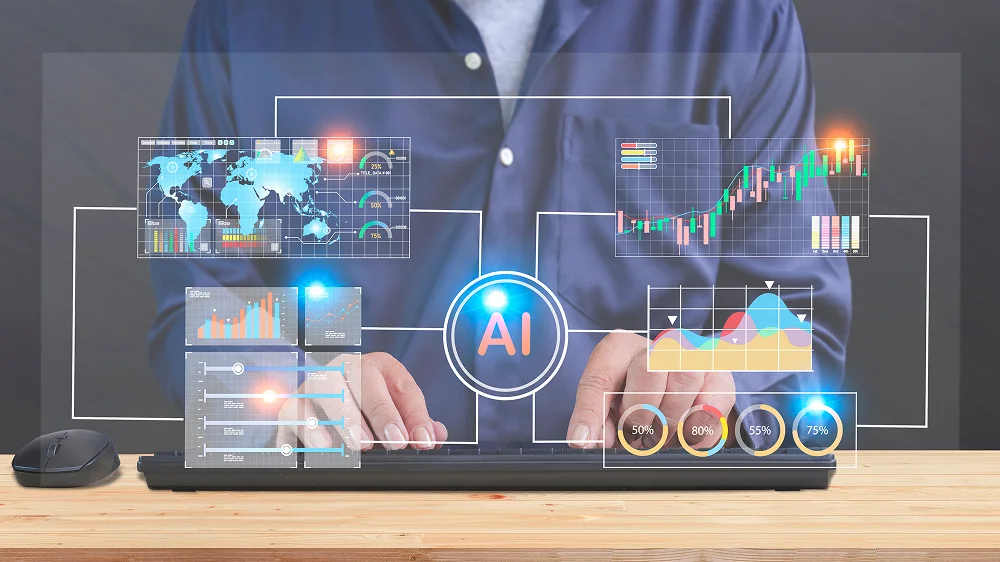
Choose Your Tools Wisely
Before implementing any technology in the organization, you need to understand it first. Ask yourself the following questions to evaluate the potential AI tools:
- As your vendor, how is the AI engine powered: does it rely on natural language processing (NLP), ML, or other advanced tech? Which of those techniques fits your business needs the most? If you are unsure, make sure to discuss this with your vendors extensively.
- In demand forecasting, even the smallest fractures matter. Ask your vendors what the model’s prediction accuracy is and how they come up with such numbers.
- Choose a platform with an intuitive user interface and explainable AI (XAI) capabilities. XAI makes AI-generated insights interpretable to humans, allowing teams to understand why certain recommendations are made.
Start Small
Bringing AI into daily operations can lead to resistance, as you are introducing fundamental changes to the business. Start small and take low-risk approaches.
- Launch a pilot project and apply AI in single processes (like supply planning or inventory forecasts) to show tangible benefits fast. These results are proof that AI simplifies workflow and improves decision-making, earning you trust from stakeholders.
- Leverage XAI to show stakeholders how AI generates responses, building trust within the organization.
- Once you’ve gained trust from early adopters, scaling AI across departments feels like a natural next step, not a major shift.
Build the Right Training Programs
An AI platform can only deliver true value when people know how to use it well, so a crucial step is to plan a comprehensive training program.
- Theory is important, but make sure to prioritize practical cases that mirror your employees’ daily work.
- Diversify learning formats by creating online modules, interactive demos, and hands-on workshops.
- Motivate your employees with internal recognition programs or certifications.
- Don’t think of training as a one-off effort. Provide ongoing support to guide users, answer questions, and track the adoption rate.
Manage Data Quality
High-quality data is how you create strong AI demand tools. There are several ways to strengthen your data foundation:
- Establish strong data governance. Define clear ownership, quality standards, and validation rules. Conduct regular data audits to maintain consistency and reliability across systems.
- Treat data quality as an ongoing journey. Continuously refine master data, update ERP order policies, and enhance the precision of demand and inventory data.
- Break down data silos. Foster collaboration between departments to enable seamless data sharing. This ensures everyone operates from the same reliable data source and enhances collaboration.
- Leverage real-time monitoring. Implement automation and real-time alert systems to detect and fix data quality issues, preventing small errors from snowballing into major disruptions.
- Continuously track and improve. Measure key data quality metrics and put in place feedback processes to refine strategies as your business evolves.
Final Notes
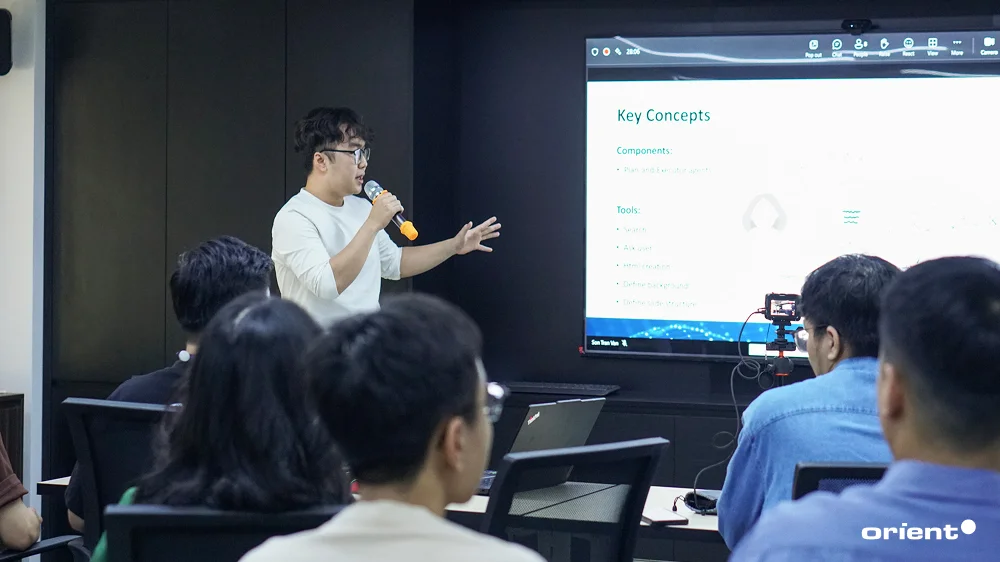
AI has gradually but surely reshaped how we operate, understand the market, and process data. This shift can feel disruptive to traditional supply chains, and it does take time to implement and adapt to. Still, the effort pays off in the long run, helping your company stay competitive and future-ready.
Do you want to learn more about AI’s powers and what it can do? Are you looking for ways to implement AI into your daily operations? The Orient Software team is happy to have a chat about your plans and visions! Don’t hesitate and contact us today!



